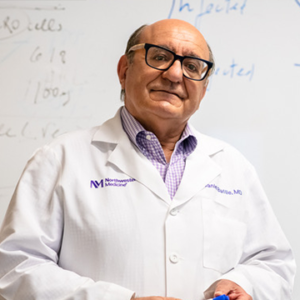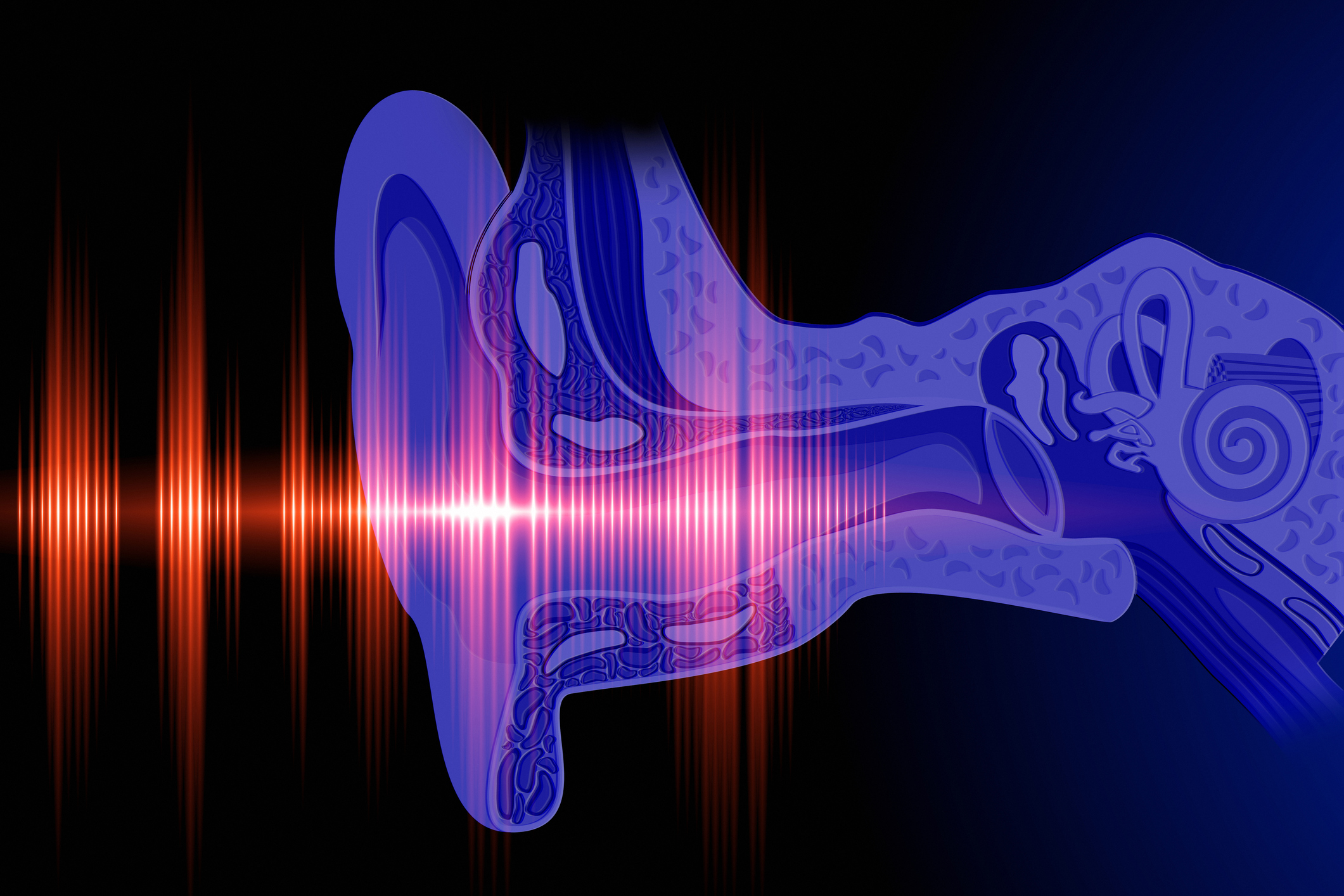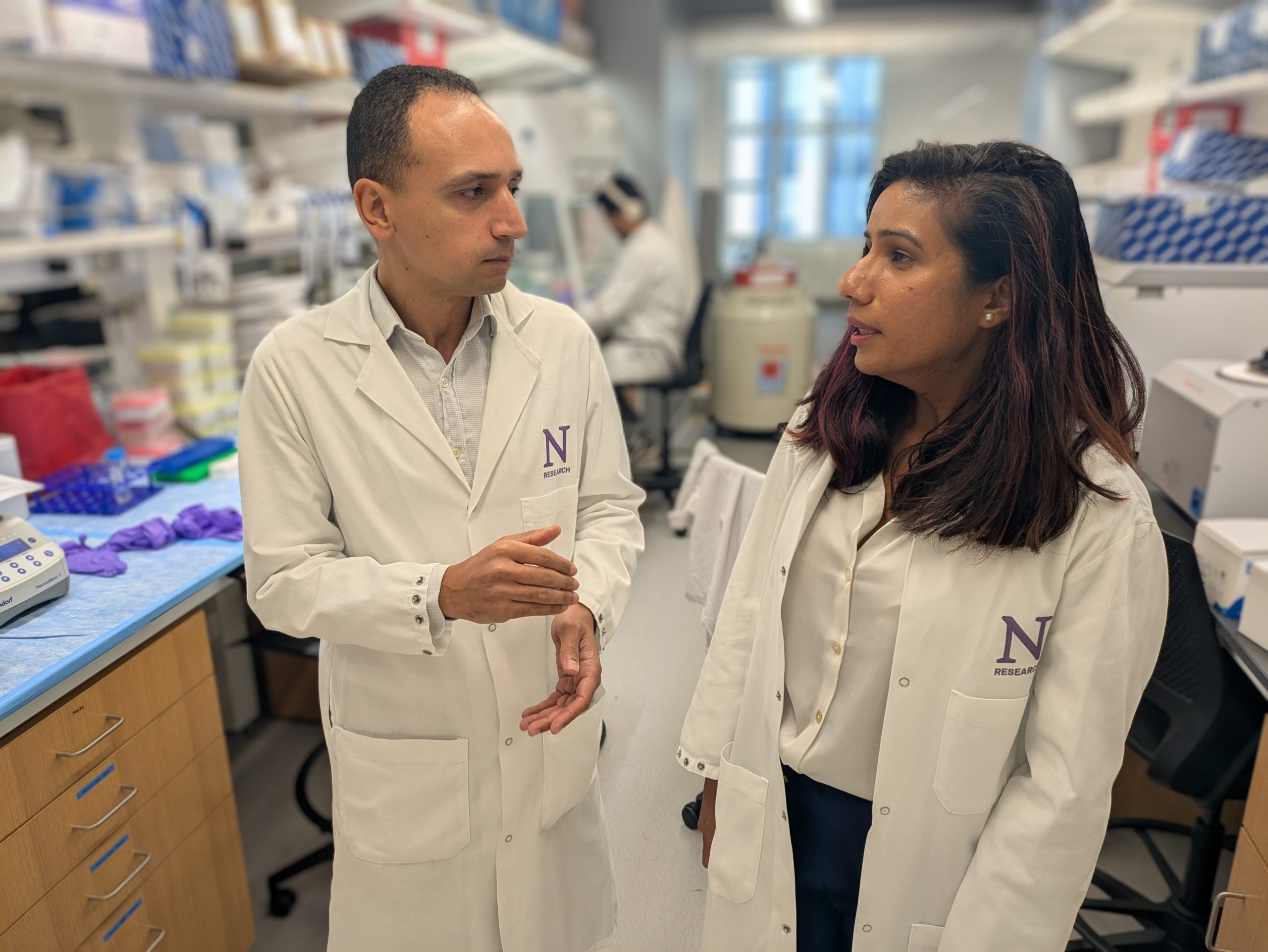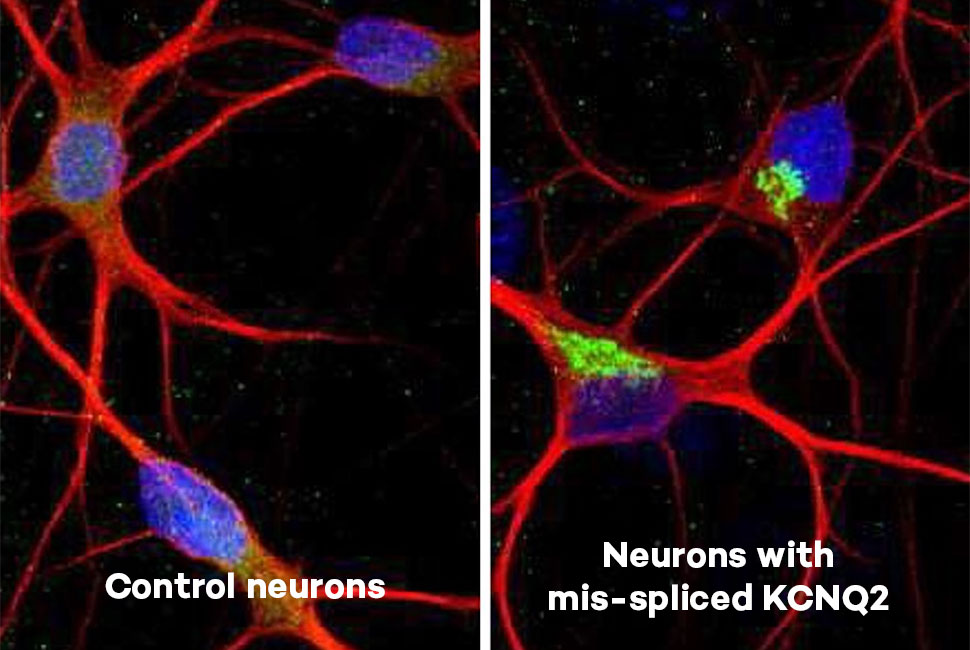
A novel ACE2 protein developed by Northwestern Medicine investigators improved survival and prevented brain infection in mice infected with SARS-CoV-2 when administered intranasally, according to a recent study published in the journal Life Science Alliance.
SARS-CoV-2, the virus that causes COVID-19, uses the angiotensin converting enzyme 2 (ACE2) protein as a main receptor to infect healthy cells. Since the discovery of this mechanism in early 2020, the use of soluble ACE2 proteins to neutralize SAR-CoV-2 infection has been investigated as a novel therapeutic approach.
Over the last three years, investigators led by Daniel Batlle, MD, the Earle, del Greco, Levin Professor of Nephrology/Hypertension, developed a bioengineered soluble ACE2 protein and have been studying its therapeutic potential in reducing infection first in human organoids and later in mice infected with SARS-CoV-2.
The soluble protein, called ACE2 618-DDC-ABD, intercepts the spike of the SARS-CoV-2 virus before it can attach to the ACE2 receptor, preventing SARS-CoV-2 from entering and infecting healthy cells.
“The natural ACE2 protein circulates in a small amount and cannot do much to really prevent the virus from attaching to the cell membrane receptor, so the cell membrane ACE2 receptor always wins. If you provide, however, enough amounts of an adequate soluble ACE2 protein at the right time, you can intercept the virus from attaching to the cell membrane receptor and getting inside the cells; this is what’s known as the ‘decoy action’ of soluble ACE2,” Batlle said.
In previous work published in the Journal of the American Society of Nephrology, Batlle’s team found that when their decoy protein was administered both intranasally and intraperitoneally to mice inoculated with a lethal dose of SARS-CoV-2 virus, the mice experienced near 100 percent survival and reduced lung damage.
“Our protein has the property of increased duration of action. That alone is an advantage because the virus is not going to take a holiday break and you want something that stays around for days. Moreover, we modified it further so that the binding power for the virus is enhanced,” Batlle said.
In the current study, Batlle’s team studied the efficacy of this treatment approach by administering their decoy protein, comparing intranasal administration to intraperitoneal (by injection) administration to mice, either before or after infection with SARS-COV-2.

Overall, five-day survival rates were zero percent in the untreated mice, 40 percent in the mice treated intraperitoneally before SARS-COV-2 inoculation, and 90 percent in the mice treated intranasally before SARS-COV-2. Additionally, in the mice treated intranasally, the investigators found the mice had undetectable viral presence in the brain and reduced viral presence and pathology in the lungs.
“We expected a difference between intranasal and systemic administration, better by the nasal route, but perhaps not of the magnitude observed,” Batlle said.
In the future, Batlle said that ideally their protein could be developed into an anti-viral nasal spray that could be used by patients and healthcare providers the moment they test positive for SARS-CoV-2 or after exposure to infected individuals.
“This study demonstrates that soluble ACE2 protein is most effective against the SARS-CoV-2 virus when administered by the intranasal route. We envision that intranasal inhalation of soluble ACE2 could become a new anti-viral strategy, especially when given to patients at risk and medical personnel in hospitals who are constantly exposed to the virus or to people recently infected,” said Jan Wysocki, MD, PhD, research associate professor of Medicine in the Division of Nephrology and Hypertension and a co-author of the study.
Luise Hassler, a former research scholar in the Division of Nephrology and Hypertension, was the lead author of the study. Jared Ahrendsen, MD, PhD, assistant professor of Pathology in the Division of Neuropathology, was also a co-author.
This work was supported by the National Institutes of Health grant 1R21 AI166940-01, a gift from the Joseph and Bessie Feinberg Foundation, and the Biomedical Education Program.






